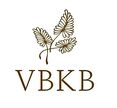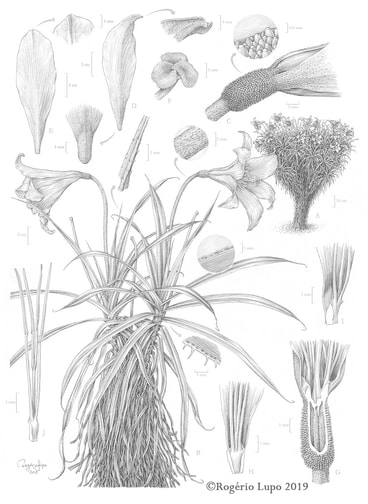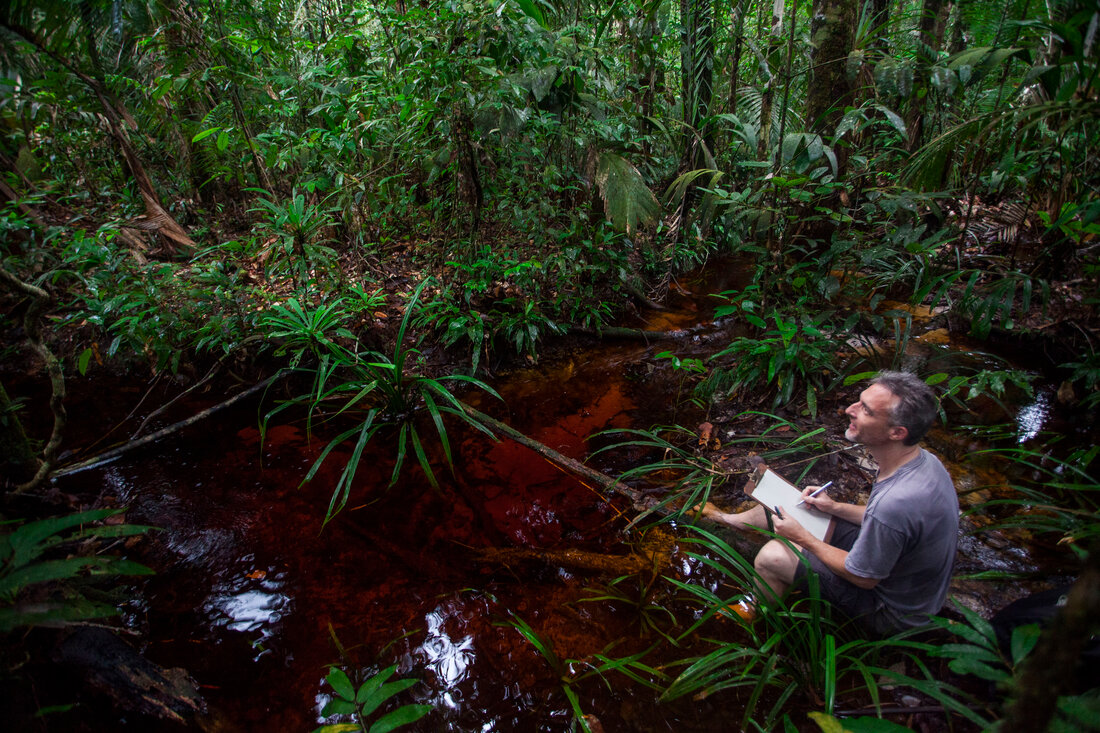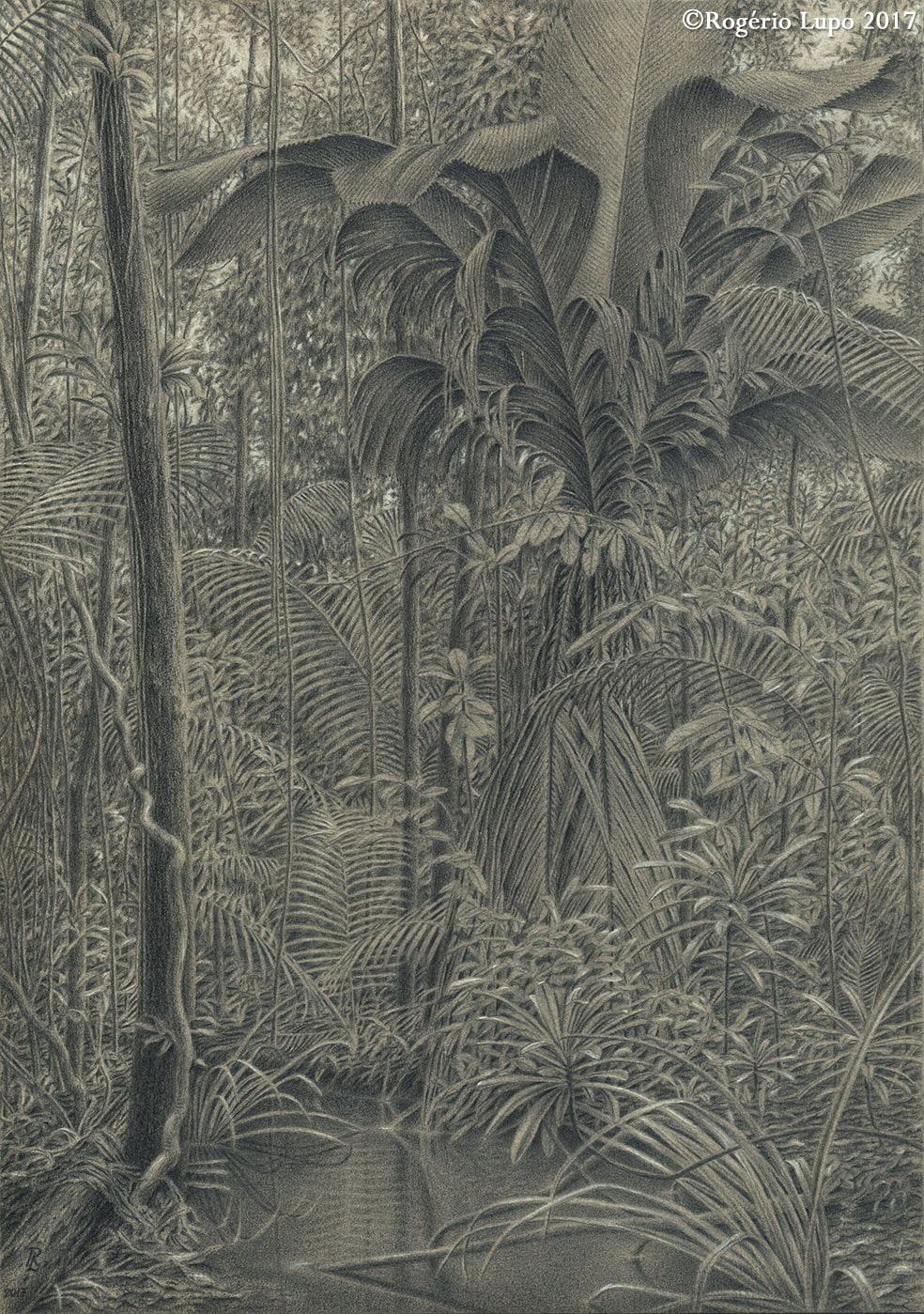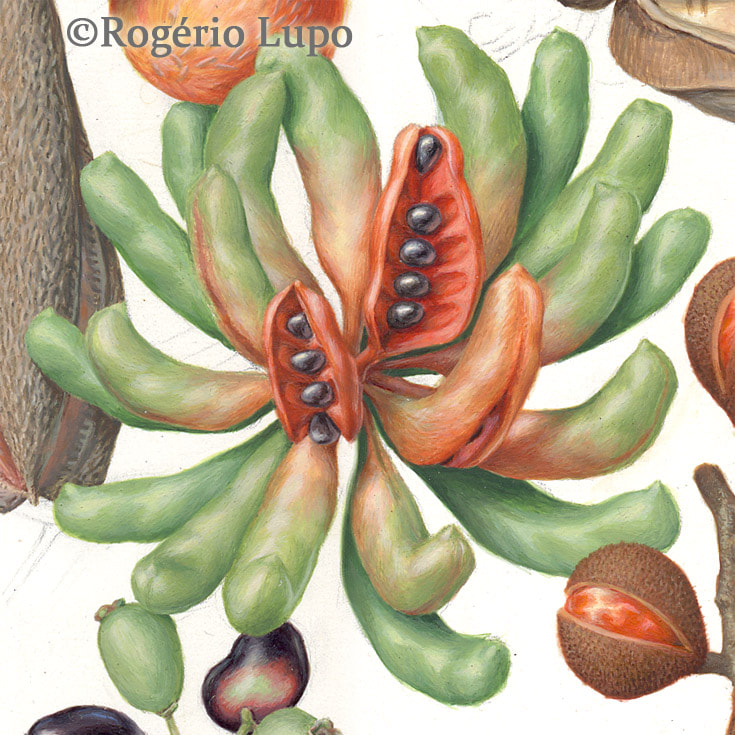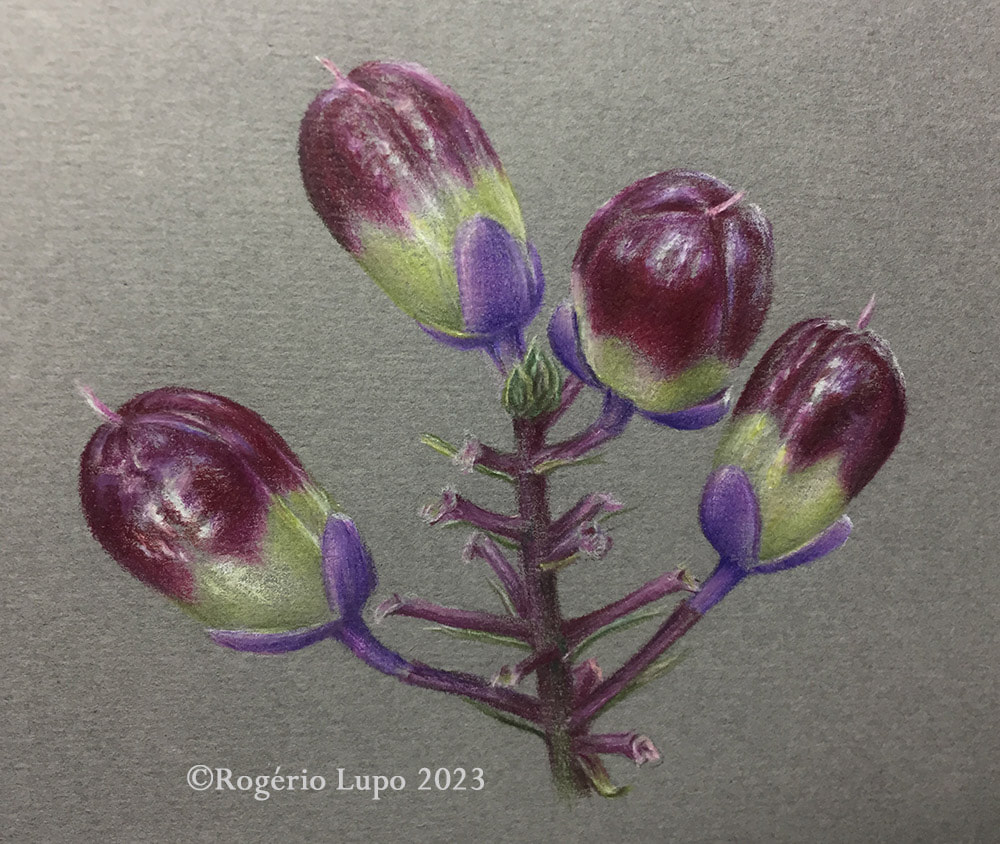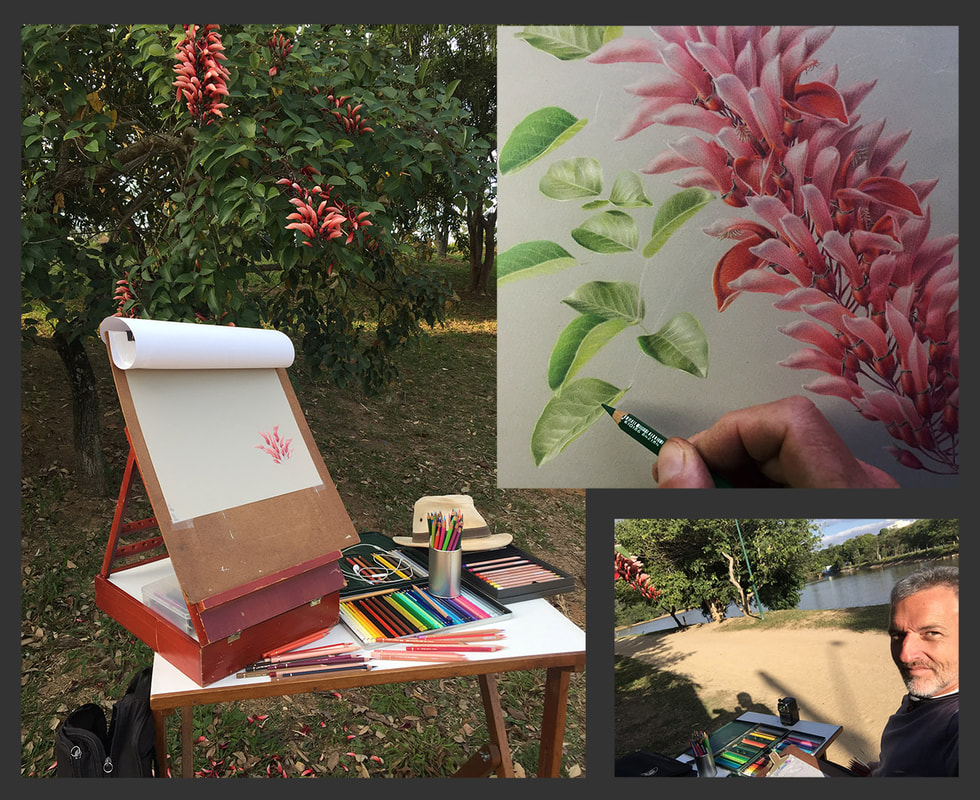At the drawing table with ....
Rogério Lupo
Interview by Hilde Orye
Can you briefly introduce yourself?
I’m a biologist and during the time of college in the 1990s I attended Classical Drawing classes. Simultaneously I worked in the laboratory of Systematic Botany at the University of São Paulo where I was studying Biology. As I started to draw the botanical material that was the subject of my own research, I realized how I could get absorbed by it and spend my whole day only doing that. Over time, my colleagues in the lab noticed my drawings and asked me if I would accept commissions. That was the beginning of a definition in my plans of career (because by all means, I had doubts about continuing to work in botanical research, which would force me to put aside all the other areas of biology that I loved equally, like entomology, ornithology and ecology). Shortly after that, I was invited to teach, inside the University's ambient, my first classes on biological illustration, and that was how I settled myself firmly into the professional path of illustrating and teaching biological art.
I'm also very much into music, gardening, spiritual practices, studying philosophy, science and different methods of Yoga and breathwork.
When and how did you decide to commit yourself to botanical drawing?
As I tell above, it was during the times of college and working in the laboratory some 30 years ago, but what triggered that interest and passion the most was my fascination with the illustrations I was constantly seeing in old and modern books, as well as in scientific journals and posters on the walls of the college halls.
Interview by Hilde Orye
Can you briefly introduce yourself?
I’m a biologist and during the time of college in the 1990s I attended Classical Drawing classes. Simultaneously I worked in the laboratory of Systematic Botany at the University of São Paulo where I was studying Biology. As I started to draw the botanical material that was the subject of my own research, I realized how I could get absorbed by it and spend my whole day only doing that. Over time, my colleagues in the lab noticed my drawings and asked me if I would accept commissions. That was the beginning of a definition in my plans of career (because by all means, I had doubts about continuing to work in botanical research, which would force me to put aside all the other areas of biology that I loved equally, like entomology, ornithology and ecology). Shortly after that, I was invited to teach, inside the University's ambient, my first classes on biological illustration, and that was how I settled myself firmly into the professional path of illustrating and teaching biological art.
I'm also very much into music, gardening, spiritual practices, studying philosophy, science and different methods of Yoga and breathwork.
When and how did you decide to commit yourself to botanical drawing?
As I tell above, it was during the times of college and working in the laboratory some 30 years ago, but what triggered that interest and passion the most was my fascination with the illustrations I was constantly seeing in old and modern books, as well as in scientific journals and posters on the walls of the college halls.
|
Can you tell us something about your journey in botanical drawing? (What was difficult at first, how did you grow in botanical art? What is still challenging?)
Because I began with the traditional and quite technical approach of scientific botanical illustrations aimed at figuring scientific papers, the main difficulties would come from the practical aspects of dealing with the old rechargeable ink pens, overly fragile papers (draft films) that were too susceptible to atmospheric conditions, clogging of the pens etc. Over time, I started to sort out most of those issues and switched to materials that would better fit my own style, hence I started using pen nibs rather than rechargeable pens and working with hatching instead of stippling. Besides that, I also started to use papers that were better, more resistant, and way more aesthetically alluring, like Bristol Boards. |
At that time, it was still common in that laboratory that botanical researchers would be oriented and educated to draw their own subjects of study. So another of my challenges was having to be able to interpret and improve the drawings of people who had difficulties in representing what they saw, and oftentimes I would just get back to the original botanical material, investigate it and redraw it correctly.
Another of my challenges that would persist as years passed, was the need for drawing the habit of plants from dry specimens, or any delicate structures that were quite damaged by the process of press and desiccation. Lately, I'm no longer able to accept commissions and I'm drawing subjects of my own choice, mostly from life, and the challenges now have changed, as I need to find well-preserved and organized structures, plan how to draw them before they get old and wither down, find the best position according to the daylight or the sunlight etc. Although this is really hard, it's also immensely gratifying because of the possibility of witnessing the pure magic of always finding something that looks perfectly adjusted to my needs – the best and most elegant inflorescence can be in a beautiful position in relation to the sunlight, in such a way that even the Earth moving won't cause much difference... so this is all a matter of patience and trust.
I think I grew in botanical art mainly because of my profound love and reverence for the form and for the botanical world, which led me to always represent everything correctly. So I have been always seeking and honoring my own style, searching for techniques that can better fit the purpose of the illustration, and I never, by any means, give up beauty and aesthetics on behalf of transmitting only arid technical information. I always aim to find balance between an accurate technical representation and a visually captivating artwork. This reverence for both realms of art and natural sciences leads me to an obstinacy in the search for the best final result I can achieve in a certain technique. It seems to me that the uniqueness of the work of any artist is what makes them grow in their field, it's what makes their own soul signature get imprinted into everything they produce.
Another of my challenges that would persist as years passed, was the need for drawing the habit of plants from dry specimens, or any delicate structures that were quite damaged by the process of press and desiccation. Lately, I'm no longer able to accept commissions and I'm drawing subjects of my own choice, mostly from life, and the challenges now have changed, as I need to find well-preserved and organized structures, plan how to draw them before they get old and wither down, find the best position according to the daylight or the sunlight etc. Although this is really hard, it's also immensely gratifying because of the possibility of witnessing the pure magic of always finding something that looks perfectly adjusted to my needs – the best and most elegant inflorescence can be in a beautiful position in relation to the sunlight, in such a way that even the Earth moving won't cause much difference... so this is all a matter of patience and trust.
I think I grew in botanical art mainly because of my profound love and reverence for the form and for the botanical world, which led me to always represent everything correctly. So I have been always seeking and honoring my own style, searching for techniques that can better fit the purpose of the illustration, and I never, by any means, give up beauty and aesthetics on behalf of transmitting only arid technical information. I always aim to find balance between an accurate technical representation and a visually captivating artwork. This reverence for both realms of art and natural sciences leads me to an obstinacy in the search for the best final result I can achieve in a certain technique. It seems to me that the uniqueness of the work of any artist is what makes them grow in their field, it's what makes their own soul signature get imprinted into everything they produce.
|
What does it mean for you to be a botanical artist in Brazil?
It's really overly ineffable to put into words. The first thing that comes to mind is the passion for the light and for the surreal diversity of forms, colors and sensations we have in nature and landscapes of this country. There's this deep sense of reverence that turns into an uncontainable drive to examine and illustrate all the time, in as many locations and biomes as possible. it's like having the right skill in the right place. And this has even become a reason for anxiety back in the day, because everything I saw was too beautiful to be only seen, then I would feel the constant need to represent it, honor and feel it deeply. At some point on this path, I had the need to find balance and refrain from these desires because they got overwhelming. Now I don't get anxious any longer, I just leave everything behind and put my hands on to illustrate, which is something I wouldn't have the nerve to do before, hence the anxiety.
|
Do you draw on location or from specimens you bring home?
There's a strong preference for the former, though sometimes I do need to bring specimens home to draw. I have also been using the plants in my garden, many times in vases so I can move them and readapt as the sunlight changes, so I keep the light more constant.
There's a strong preference for the former, though sometimes I do need to bring specimens home to draw. I have also been using the plants in my garden, many times in vases so I can move them and readapt as the sunlight changes, so I keep the light more constant.
You are a very artistic person. You play music as well and you seem to me like a spiritual person. When you tell about “The Path of the Lazy with Discipline’ it reminds me of Eastern Philosophy. Do you think philosophy and different artforms intertwine and have an effect on your profession as a botanical illustrator? In what way does it influence your artwork?
That's a great question and very well said, brilliant. Indeed you captured something that may not be obvious to everyone, but that's true. I'm very deeply into the spiritual path since decades ago. All aspects of my life have never been separated from that path and in fact, the Eastern traditions have a great deal of spiritual influence on me. But curiously enough, it's not that I begin by following those principles and apply them to my life, but rather when I study these traditions, I can recognize everything that my intuition has always whispered to me and led me to live from. So the path of the lazy with discipline, for example, is something that I figured out by my own inner observation and experiences, and it's present in those traditions in a very similar way indeed.
And yes, all those paths intertwine and are the same thing in different expressions. There needs to be a deep inner investigation before we can master some artistic techniques, or before we can accurately and faithfully bring about a musical composition out of the pure ether. Maybe it's the other way around and the artistic practice is what has been molding my spirit and leading me to different dimensions of being. Yet (this is perhaps more accurate) maybe it's not that I am making and creating art, but art is making me and bringing me into existence, for it's a meditation that heals me and has constantly been changing my life.
But ultimately I have no doubt that every one of my artistic achievements wouldn't ever be possible had I not been honoring the indescribable spirit that abides in everything and every moment. Honestly, I believe numerous artists live from that, even though eventually they may not be concerned with it. When people appreciate artworks, it's not just for technical reasons or because of the beauty, but they're somehow intuiting and recognizing the luminous inner stance from which those art pieces were conceived and crafted. Their heart resonates with the life that's imprinted in the artwork and at that moment something transcendental takes place. This is the case for numerous historical and contemporary artistic creators of all kinds of artforms. And that's why I feel this need to draw mostly from alive specimens, as this is the best way to capture the organism's soul and the alive moment.
That's a great question and very well said, brilliant. Indeed you captured something that may not be obvious to everyone, but that's true. I'm very deeply into the spiritual path since decades ago. All aspects of my life have never been separated from that path and in fact, the Eastern traditions have a great deal of spiritual influence on me. But curiously enough, it's not that I begin by following those principles and apply them to my life, but rather when I study these traditions, I can recognize everything that my intuition has always whispered to me and led me to live from. So the path of the lazy with discipline, for example, is something that I figured out by my own inner observation and experiences, and it's present in those traditions in a very similar way indeed.
And yes, all those paths intertwine and are the same thing in different expressions. There needs to be a deep inner investigation before we can master some artistic techniques, or before we can accurately and faithfully bring about a musical composition out of the pure ether. Maybe it's the other way around and the artistic practice is what has been molding my spirit and leading me to different dimensions of being. Yet (this is perhaps more accurate) maybe it's not that I am making and creating art, but art is making me and bringing me into existence, for it's a meditation that heals me and has constantly been changing my life.
But ultimately I have no doubt that every one of my artistic achievements wouldn't ever be possible had I not been honoring the indescribable spirit that abides in everything and every moment. Honestly, I believe numerous artists live from that, even though eventually they may not be concerned with it. When people appreciate artworks, it's not just for technical reasons or because of the beauty, but they're somehow intuiting and recognizing the luminous inner stance from which those art pieces were conceived and crafted. Their heart resonates with the life that's imprinted in the artwork and at that moment something transcendental takes place. This is the case for numerous historical and contemporary artistic creators of all kinds of artforms. And that's why I feel this need to draw mostly from alive specimens, as this is the best way to capture the organism's soul and the alive moment.
|
What is your favourite medium?
That's an impossible question for me, I think. It's like choosing one favorite among the five senses. Do I prefer colors and forms, scents, sounds, flavors, or touches? All media feel like part of myself, and whenever I start working on one, I cannot think of any other and get instantly passionate about it. Again, that used to be a reason for anxiety back in the day, so I'd better forget everything and focus on one medium at a time, otherwise I get overwhelmed by the need of working with all the other media right now and not tomorrow. Not to mention the fact that I should have written down all my musical compositions and didn't ever do it, hence they're lost forever because I stopped playing and repeating them and then forgot them all. |
How do you choose your subjects? Are they commissioned or do you choose your own subjects? What is the most challenging or the most satisfying illustration you have made so far?
I interrupted accepting commissions a while ago to focus only on classes and on my own illustration projects. Now I choose the subjects I want to draw. Pen nib illustrations have always been the most challenging, and demand a lot of previous practice before I can feel confident enough to take the risk of going for the final result. They can be extremely satisfying though (particularly when all works well), but I've been discovering a kind of satisfaction with the result of colored pencils that is hard to outshine. There's something magnetic in the quality of the finished plate and I could spend hours just looking at the painted surface that looks otherworldly gleamy.
I interrupted accepting commissions a while ago to focus only on classes and on my own illustration projects. Now I choose the subjects I want to draw. Pen nib illustrations have always been the most challenging, and demand a lot of previous practice before I can feel confident enough to take the risk of going for the final result. They can be extremely satisfying though (particularly when all works well), but I've been discovering a kind of satisfaction with the result of colored pencils that is hard to outshine. There's something magnetic in the quality of the finished plate and I could spend hours just looking at the painted surface that looks otherworldly gleamy.
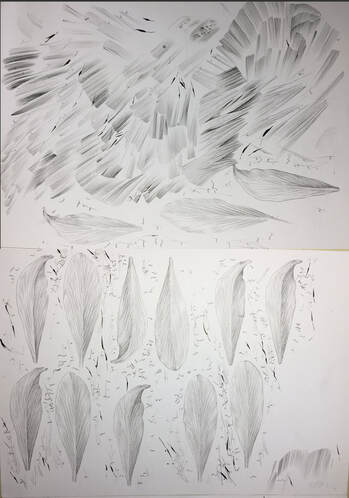 7 - repetitive practice - question
7 - repetitive practice - question
Pencil lines can be erased, but ink is definite. I can imagine some people are reluctant to make ink illustrations, afraid to make a mistake halfway. How do you overcome your fear of making mistakes?
I do that with innumerable hours of compulsive repetitive previous practice. Some subjects can be easy to address these days after so many years of practice, hence I begin with what seems easier and simpler, then move forward through increasing levels of challenge. But when the challenge is excessively high and hard, I stop everything and practice obsessively, trying to figure it all out in deep detail, trimming out all the mistakes and potential sources of errors one by one and becoming progressively better until every tiny detail is mastered. I may need to work thirty, forty times on the same subject, repeating it over and over again many times until I master it. Then I have it all dominated regarding what I need to do and how to do it.
After all this training, I feel confidently prepared and go for it with deep concentration on my breath and on my peaceful state. During the whole work, I aim to respect my inner state, because I know many things can affect my performance. So I will endeavor to create an inspiring day for myself, keeping calm and relaxed, listening to the right music... I also avoid alcohol on previous days, bad words, stressful situations. When we have to draw perfect and steady parallel lines, every tiny aspect of our mood is reflected by and becomes visible in our drawing, there's no escape.
Since I work with parallel lines, the kind of mistake I can incur into is quite predictable. When one simple line goes wrong somehow while we're drawing it, we just stop it so it's easy to get it right and correct what went wrong. The bigger and the hardest-to-fix mistake is when something is poorly planned, then the complete series of lines go well individually, but the whole is what fails. I mean the lines can be pretty good, but the intended effect of form or light and shade of the whole ends up terribly rendered. The only way to prevent that is by planning accurately and practicing obsessively. Otherwise, the only solution is to erase that large area and start over again, which can be really tricky and risky, but feasible.
I do that with innumerable hours of compulsive repetitive previous practice. Some subjects can be easy to address these days after so many years of practice, hence I begin with what seems easier and simpler, then move forward through increasing levels of challenge. But when the challenge is excessively high and hard, I stop everything and practice obsessively, trying to figure it all out in deep detail, trimming out all the mistakes and potential sources of errors one by one and becoming progressively better until every tiny detail is mastered. I may need to work thirty, forty times on the same subject, repeating it over and over again many times until I master it. Then I have it all dominated regarding what I need to do and how to do it.
After all this training, I feel confidently prepared and go for it with deep concentration on my breath and on my peaceful state. During the whole work, I aim to respect my inner state, because I know many things can affect my performance. So I will endeavor to create an inspiring day for myself, keeping calm and relaxed, listening to the right music... I also avoid alcohol on previous days, bad words, stressful situations. When we have to draw perfect and steady parallel lines, every tiny aspect of our mood is reflected by and becomes visible in our drawing, there's no escape.
Since I work with parallel lines, the kind of mistake I can incur into is quite predictable. When one simple line goes wrong somehow while we're drawing it, we just stop it so it's easy to get it right and correct what went wrong. The bigger and the hardest-to-fix mistake is when something is poorly planned, then the complete series of lines go well individually, but the whole is what fails. I mean the lines can be pretty good, but the intended effect of form or light and shade of the whole ends up terribly rendered. The only way to prevent that is by planning accurately and practicing obsessively. Otherwise, the only solution is to erase that large area and start over again, which can be really tricky and risky, but feasible.
If your grandchildren would ask you to tell something about your life as a botanist and botanical artist, what would you tell them?
I think I would tell them that when I was a child like them, sometimes I woke up to an overwhelmingly beautiful day, and I would often become a little bit frustrated for not knowing how to better enjoy such immense beauty under that sublime daylight. Should I enjoy that day riding my bike? Maybe better if I could be on a beach? Maybe a bath in a river? I did have the chance to do all of that, but somehow I would always feel that I was not being able to fully savor and sip all that beauty in. Only after I started to draw in nature would I finally feel that I was fully enjoying the beauty of every day. So there's nothing that can be compared to being fully present in nature and doing what you love, and from that, all difficult circumstances and life challenges can become smoother to face and tackle.
I think I would tell them that when I was a child like them, sometimes I woke up to an overwhelmingly beautiful day, and I would often become a little bit frustrated for not knowing how to better enjoy such immense beauty under that sublime daylight. Should I enjoy that day riding my bike? Maybe better if I could be on a beach? Maybe a bath in a river? I did have the chance to do all of that, but somehow I would always feel that I was not being able to fully savor and sip all that beauty in. Only after I started to draw in nature would I finally feel that I was fully enjoying the beauty of every day. So there's nothing that can be compared to being fully present in nature and doing what you love, and from that, all difficult circumstances and life challenges can become smoother to face and tackle.
What was your biggest achievement so far?
I cannot think of any answer other than having attained the capacity of living life as another form of making art, and hence being able to understand its mechanisms and flow with them being just one more small piece in this gigantic gear.
What do you still want to achieve? What are your goals or future projects?
I don't usually nourish plans for the future, so I rather let life surprise me with its own projects for my journey. These tend to arise at the right time from the right source, frequently out of my subconscious aims. What my soul seems to keep pursuing all the time is the maintenance of the capacity of living every moment in its fullness. And this is something that art teaches me all the time but it transcends the activity of making art only, for this capacity breaks into all the tasks of my day-to-day living.
What piece of advice would you give to other botanical artists?
I would say what life taught me – if you need advice before enduring a journey, don't ask the guy on the couch. Get on the road and listen to the folks that are already on the journey. And they might say "stop fearing, trust the road and do what really inflames your heart wildly. You can even take the turn on the crossroad because of food and gold. But remember to get back to the truthful path when ready, then go straight to your destiny because that's where you'll find your soul, inside the ark of emeralds and amethysts".
Dear Rogério,
thank you so much for this wonderful interview. I am sure our members will enjoy it very much!
